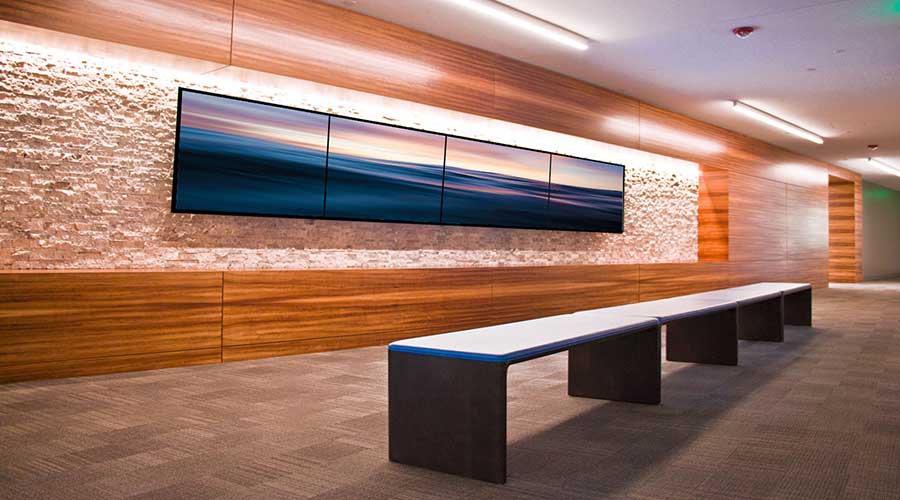
Which Costs More - A Video Wall or No Video Wall?
The adage “You only get one chance to make a first impression” is just as true with places as it is people. Whether it’s a hotel, a student library, or a lobby, what we feel the moment we walk in often translates into an opinion—the hotel deal was too good to be true, I can’t see myself at this college, this company feels too corporate. And that opinion influences the decision that happens next—I’m booking a different hotel, I’m attending the other college, I’m selecting a different provider. Creating an impression that is true to your brand and your mission takes more than a skilled interior designer—it takes technology. Video walls deliver more than an impression—they create an experience. The success of video walls at stopping retail shoppers in their tracks, creating a high-end feel in hotels, helping hospital patients and visitors find their way, engaging students in learning, and delivering relevant information to lobby visitors is the reason the adoption of this solution continues to increase at impressive rates. It’s likely why you’re researching video walls and reading this blog.
ARE VIDEO WALLS EXPENSIVE?
It’s easy to get excited about video walls. The visuals are stunning. The “wow factor” is off the charts. And the interactivity—multi-touch!—is the stuff we dream about. But just like that moment when you realize the car interior is leather not cloth, concerns about price can dampen your enthusiasm. For a proven technology investment like video walls, perhaps a better question is which costs more—a video wall or no video wall? You can guess where we’re going, but how we get there—now that’s worth the read. We’ll look first at what goes into a video wall and then how to assess the return on your investment.
THE FORMULA FOR VIDEO WALLS
The use cases for video walls are practically endless. This means there are quite a few variables to define when designing and building a video wall if it is to equal the project vision. A layperson may think of a video wall as a group of displays mounted next to each other on the wall and be halfway out the door to Best Buy when you catch them. But the tech-savvy crowd understands that a lot more goes into it. Here are five variables that will influence the investment and the outcome.
- Size. The purpose and location of the video wall are important considerations. But don’t overlook other factors, including content type and how far viewers will be from the video wall.
- Functionality and Environment. Do users need to interact with the screens through touch or gesture? What are the lighting conditions? These questions and others found here help determine the display choice that meets your needs.
- Processing. Will you share a single image across all displays or will you share multiple images (also known as windowing)? Are performance and customization at the top of your list? Or are scalability and a lower total cost of ownership more important?
- Commercial Grade. Professional or commercial-grade displays are more expensive than consumer options, but they are an absolute must for video walls. Not only will commercial displays support the longer in-operation hours of video walls, but they offer temperature and color control, better display run time, and other valuable benefits.
- Installation. Video walls can be complex. It’s best to go with professional installers who can assess whether additional structural support is needed and pre-stage and test every component of the video wall before installing at your location.
THE VALUE OF VIDEO WALLS
Traditional ROI Models (investment revenue - investment cost)/(investment costs) may not be the best way to evaluate the full results of your video wall project. It misses the intangible or soft benefits video walls deliver. How do you accurately attribute a financial gain to a positive experience? Or engagement? Or finding your way? The value of soft benefits ultimately contributes to a financial return. Think about the examples we started with—the hotel, the college campus, the corporate lobby. Intangible experiences and feelings ultimately translated to hard-dollar decisions—to book elsewhere, to attend another college, to select a different provider. When you consider all the positive business or institutional outcomes video walls influence, the question of which costs more—a video wall or no video wall, answers itself.
Next Steps
For more resources and information about video walls or to request a free consultation, contact us or chat with us in the bottom corner of your screen!

